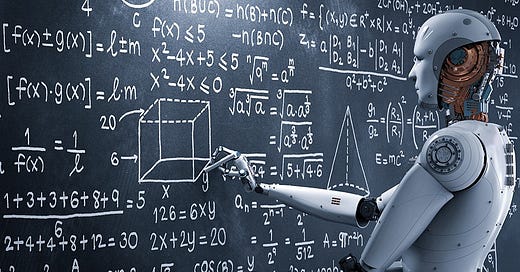Understanding the Terminology of Artificial Intelligence
We'll explore some of the most common AI-related terms, including Deep Learning, Artificial Neural Networks, Convolutional Neural Networks, Recurrent Neural Networks, Generative Adversarial Networks,
Artificial Intelligence (AI) has become one of the most popular buzzwords in the tech industry. With the rise of AI, many different terminologies have been associated with it. These terminologies can often be confusing, and it's not always clear what they mean. In this article, we will take a closer look at some of the most common terminologies related to AI.
Deep Learning (DL)
Deep Learning is a subset of machine learning that uses artificial neural networks with multiple layers to learn from vast amounts of data. These layers of brain-like connections enable computers to recognize patterns and relationships in data and make predictions or decisions based on that data. An example of Deep Learning is the technology behind self-driving cars, which can recognize traffic signs and avoid obstacles.
Machine Learning (ML)
Machine learning is a subset of AI that uses algorithms to learn from data and make predictions or decisions based on that data.
Artificial Neural Network (ANN)
Artificial Neural Networks are computer programs that simulate how the human brain processes information. These networks use layers of interconnected "neurons" to recognize patterns and relationships in data. For example, a program that can recognize handwritten numbers uses an Artificial Neural Network to analyze the patterns of the handwritten digits and classify them accordingly.
Convolutional Neural Network (CNN)
A Convolutional Neural Network is a specialized Artificial Neural Network designed for image recognition and processing. It uses convolution to extract features from images and analyze them for patterns and relationships. A smartphone app that can identify the type of plant you're looking at is an example of a Convolutional Neural Network in action.
Recurrent Neural Network (RNN)
A Recurrent Neural Network is a type of Artificial Neural Network designed for processing sequential data with a temporal relationship. These networks can remember past information and use it to predict future events. For example, predicting the next word in a sentence is an application of Recurrent Neural Networks.
Generative Adversarial Networks (GANs)
Generative Adversarial Networks are a type of Artificial Intelligence involving two computer programs competing to create new, realistic data. One program generates data, while the other evaluates it and provides feedback. This process continues until the data generated by the first program is indistinguishable from the real data. An example of this technology is creating new artwork or video game characters by combining existing styles.
Explainable AI (XAI)
Explainable AI is a type of Artificial Intelligence that focuses on making it easier for people to understand how computers make decisions. This is particularly important in critical applications such as healthcare, where a doctor using a computer program to diagnose a patient needs to understand why the program made its decision. XAI technology provides transparency and allows humans to make informed decisions based on the outputs of AI systems.
Supervised Learning
A type of machine learning that involves training a model on labeled data, where the desired output is known, to make predictions or decisions on new, unlabeled data.
Unsupervised Learning
A type of machine learning that involves training a model on unlabeled data to identify patterns and relationships in the data.
Reinforcement Learning
A type of machine learning that involves training a model to make decisions based on feedback from the environment, to maximize a reward or minimize a penalty.
Wrapping is up
In conclusion, understanding the terminology of Artificial Intelligence is essential for anyone interested in the field or its applications. These terms represent some of the fundamental building blocks of AI. Understanding them, we can better understand the technology and its potential applications in various industries.



